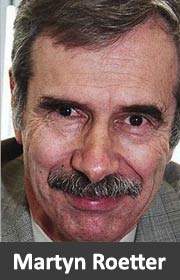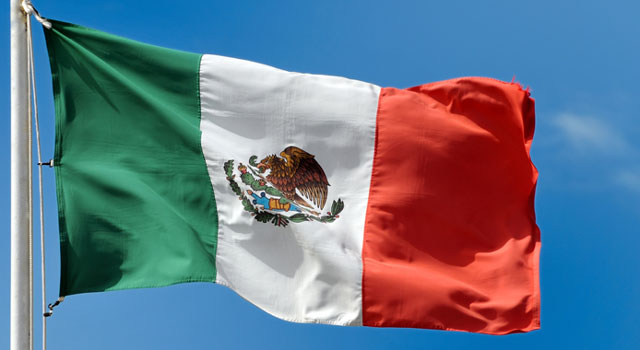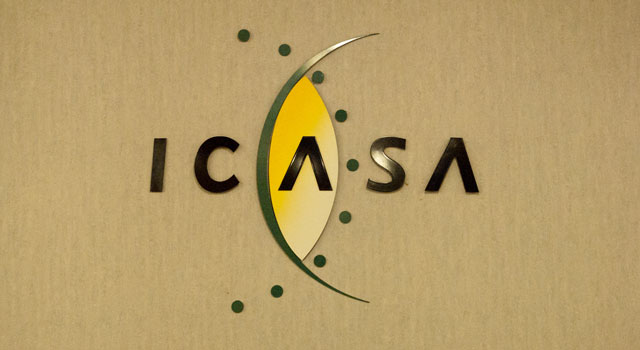 The idea of establishing a new, open-access, wholesale-only wireless network (OAWN) in South Africa has received significant attention in recent months.
The idea of establishing a new, open-access, wholesale-only wireless network (OAWN) in South Africa has received significant attention in recent months.
Its purpose would be to stimulate greater competition in the provision of retail wireless services. It would also, through its deployment in sub-1GHz frequencies in the “digital dividend” band, help expand coverage of mobile broadband as economically as possible to underserved and unserved areas of the country.
A number of comparable initiatives in other countries — including Kenya, Rwanda, Russia and Mexico — have been cited in discussions of the pros and cons of this approach. In favour of an OAWN are:
— The efficiencies (in terms of capacity) achievable if the OAWN is awarded a large amount of bandwidth.
— Its availability as a platform for retail service providers (mobile virtual network operators, or MVNOs) of diverse sizes and customer target markets to attract additional market entrants that will not have to undertake the formidable task of investing in their own network infrastructure.
In contrast, arguments against an OAWN include:
— The challenges of regulating a wholesale monopoly, so as to ensure against risks that it will charge unreasonable or monopoly wholesale prices; will not be motivated to optimise its efficiency and keep up with developments in technology and demands that require further timely investments; and does not succumb to blandishments to discriminate in favour of its largest customers against smaller services providers.
— The risk that the wholesale operator will fail to attract enough traffic from existing mobile operators with large customer bases to build a sustainable business if the latter predominantly prefer to exploit their own network facilities.
— The risk that competitive differentiation between retail services providers will be inhibited if they all depend to a substantial extent on the same radio access network infrastructure, and if the capacity any one of them can deliver to its retail customers is restricted because the OAWN is awarded substantial spectrum they might otherwise be able to exploit directly themselves.
There is tension, or a balance to be weighed and a compromise to be found, between risks two and three above. For example, in order not to be accused of unreasonable discrimination, the wholesale operator may be reluctant to invest in a dense small cell deployment whose costs, and hence wholesale prices, may put access to them out of reach of small services providers.
This reluctance to invest may persist even though it might be requested and could increase the value delivered to users by large services providers by improving the performance of and differentiating the services they can offer to their retail customers.

Lessons from other countries
The issues outlined above arise wherever an OAWN is being considered, including South Africa. Judgment about whether or not to pursue the OAWN path in South Africa is further clouded since there is no proven or relevant example of the outcome of an OAWN elsewhere.
In Kenya, the OAWN idea seems at this point to be dead in the water given that the dominant operator, Safaricom (40% owned by Vodafone which has management responsibility), has negotiated an arrangement so that in effect it is going its own way to exploit the digital dividend band and will not be part of the public-private partnership envisaged to operate an eventual OAWN.
In the absence of Safaricom’s participation, it is hard to see how an OAWN in Kenya could attract enough traffic to be economically viable. Hence (see risk two above) the possibility of a viable OAWN in Kenya has been overtaken by events.
The example of Rwanda, in which an OAWN has been launched as a joint venture between the government and a foreign operator, Korea Telecom, is not applicable to South Africa. Nor is the proposal for one in Russia. In both these countries, although they differ in many other aspects (size, economics, history, legal institutions, international relationships), the government or even one individual is able to take and enforce decisions and oblige existing operators to go along in a top down, autocratic way that is inconceivable in South Africa given its legal and other institutions and the influence of major operators.

The interesting case of Mexico
While Mexico is also very different from South Africa, its ongoing initiative to launch an OAWN in the digital dividend band offers perhaps the most valuable insights and guidelines for South Africa as, or if, it tries to decide whether to go down the OAWN path.
In Mexico, the proposed OAWN is one element in the government’s basic reform of the country’s telecommunications sector to introduce more competition into a market that has been dominated by one operator (America Movil) in both the fixed and mobile segments.
As a result of this quasi-monopoly, Mexico has suffered from high prices and poor service for many years, even by comparison with countries at comparable levels of economic and social development, let alone world leaders.
Mexico intends to launch a public competition — currently scheduled for 2016 — for a licence of 90MHz of frequencies in the 700MHz band (using the Asian band plan not the less efficient US one) within which an open-access, wholesale-only network is to be deployed. The regulator, Instituto Federal de Telecomunicaciones (Ifetel), and the relevant ministry, Secretaria de Comunicaciones y Transportes, are taking a number of steps, still to be finally formally established, to maximise the chances of success of this venture, including:
— The competition will be as open as possible to attract interest and investment from as wide a variety of sources as possible. It will be open to 100% foreign ownership, but with the requirement that a domestic Mexican company be established. Existing Mexican operators can participate provided they show that they will not have a significant influence over its operation.
— Some portion of the OAWN’s capacity will be set aside for MVNOs to further stimulate competition at the retail level.
— The costs of the spectrum itself to the eventual winner of the competition will be reduced well below what is customary in Mexico, recognising that the ultimate goal and value of the venture will lie in its deployment to provide affordable broadband to as many users as possible with as wide a geographical coverage as possible.
— The OAWN will have wholesale access to a national fibre network, building on facilities that are already installed, owned and operated by a state-owned entity (this will also reduce the investments that the OAWN operator will have to make itself). The licence awarded in 2006 and the assets of the national fibre-optic network owned and operated by the state-owned electric utility Comisión Federal de Electricidad are being transferred to the autonomous state-owned agency with responsibilities for supplying communications and financial services throughout the country, Telecomunicaciones de México (Telecomm). Telecomm will provide wholesale services to the OAWN as well as to other customers, including on a continuing basis CFE, to support its activities of electricity generation, transmission and distribution.
— A new agency will be established to run the public competition to operate the OAWN, and to establish the public-private partnership contract with the winner and then to monitor and enforce the fulfilment of this contract, which will have a duration of 20 years with a provision for renewal. This agency will have a governing board consisting of four representatives of the government and three independent directors.

The decision to reduce substantially the spectrum costs incurred by the OAWN operator is a rejection of the idea common in many circles (notably national treasuries trying to reduce next year’s national budget shortfall) that the primary goal of an auction is to maximise its one-time revenues.
The consequence of this goal is that the financial resources of the auction winners may be so depleted as to hobble their ability to deploy networks as rapidly or widely as would be desirable, thereby reducing their positive economic impact in future years, most likely by a greater amount than the one-time boost from maximised auction revenues.
Mexico’s specific way of reducing spectrum costs for the OAWN operator is based on the unusual structure of the spectrum fees it charges. The winner of a spectrum licence in an auction pays an initial fee (the amount of its winning bid), but is then also required to pay annual fees (determined as a function of the frequency band involved and the zones covered by the licence, but independently of the amount of the winning bid) for the period of the licence, which is typically 20 years. The net present value of these annual fees can substantially exceed the amount of the winning bid to acquire the licence. The Mexican proposal is to reduce the amounts of these annual fees by up to 90% specifically for the OAWN’s licence.
In the case of South Africa (or other countries), a similar effect might be achieved by, for example, requiring payments of a winning bid to be spread out over time, with payments beyond the first instalment to be substantially reduced if certain milestones have been reached when they become due (for example, coverage, customers, etc).
The role and power of the Mexican regulator is critical for the programme of launching an OAWN in that country. Ifetel operates under a very different set of circumstances than Icasa in South Africa.
Ifetel is an autonomous agency created in 2013 that is independent from the executive and legislative branches. A body heads it that is appointed through a three-step process designed to be more stringent than the criteria for appointing supreme court justices, which involves only the executive and the senate. Candidate selection involves an open, competitive process that is subject to a technical evaluations committee, which, together with higher education institutions, submits three to five candidates to the president, from which one is proposed to the senate for confirmation.
Ifetel was established to make the sectors of the economy, which it regulates, more competitive and effective. It is roughly equivalent to, but in some respects more powerful than, the Federal Communications Commission in the US. Its authority is much more extensive than that of Icasa in South Africa.
Ifetel is responsible for regulating, promoting, supervising and overseeing competition in telecommunications and broadcasting. It also has powers in these sectors similar to the antitrust division of the US department of justice, including the power to order divestitures to correct anticompetitive circumstances. In other words, Ifetel plays a complex dual role as regulator and competition authority. Notably, among its key staff Ifetel includes persons with considerable international experience and contacts in professional technology and engineering communities as well as other sources of expertise.
The Mexican regulator’s annual budget, which is part of the government’s budget that has come under pressure with the fall in oil prices (revenues from crude oil exports have been financing about one third of this budget), has been running at about 2bn pesos (or US$121m at the current market exchange rate).
Mexico is not South Africa
At this stage, there can be no guarantee that the Mexican OAWN initiative will come to fruition or will prove to be viable or successful if implemented.
Apart from any other stumbling block, the goals of an OAWN can be frustrated if in the event it falls victim to corruption and/or incompetence in its leadership and governance and/or is plagued by political interference driven by short-term and myopic or selfish motivations and interests.
In addition, the current market dynamics, relationships between stakeholders and public policy in South Africa are substantially different from and less clearly established than in Mexico.
The policy vacuum or haphazard and indecisive policy-making environment in South Africa is a major obstacle to the realisation of an OAWN, or indeed any alternative new or creative initiatives. The respective roles of, and relationships between, the regulator Icasa, government departments, and the state’s own investments in network operators and facilities are not as conducive to the creation of a potentially more fruitful environment as the climate and institutional arrangements within which Ifetel is working towards launching an OAWN in Mexico.

The Mexican situation is more promising, although still fraught with pitfalls, for establishing a healthier, more innovative, competitive and productive telecoms sector working for the benefit of an entire economy and society.
Mexico also has the advantage of bordering the US, its major export market, and of already having attracted a new large foreign investor into its telecoms sector, AT&T. Several key decisions have been taken in Mexico and their implementation has been making visible and significant progress in contrast to the relative paralysis or prolonged delays being experienced in South Africa on the overdue resolution of matters of critical importance such as the release of new spectrum.
Nevertheless, the Mexican plan holds several valuable lessons to be kept in mind if a comparable OAWN initiative is to be pursued in South Africa, namely:
— The government should apply its discretion where possible and state-owned assets where available to reduce the investments required of the OAWN operator – short-term pressure to maximise revenues from spectrum auctions as a primary goal should be resisted.
–The operation of the OAWN should be open to as many bidders or participants as may be interested, foreign or domestic (subject to qualifications).
–To bolster their resources and expertise, the regulator and/or department of telecoms & postal services should either recruit staff with substantial sector expertise and experience in countries with the most well developed and highly regarded regulatory systems and/or hire international consultants to help them plan and implement all the steps required to create a path for a viable OAWN, and then oversee its operation.
— The supervision or governance of the OAWN should be entrusted to an autonomous agency specially constructed for this purpose.
South Africa will not be able to — and nor should it try to — emulate all the details of the Mexican path towards an OAWN, whether this effort succeeds or fails. However, it is unavoidable that ingenuity and creativity will be needed to establish conditions for a scenario in which an OAWN will have a reasonable chance of developing into a sustainable business that can contribute to building an improved telecoms sector for all South Africans.
- Martyn Roetter is senior consultant at BMI-TechKnowledge
- Read the original white paper on BMI-T’s website



